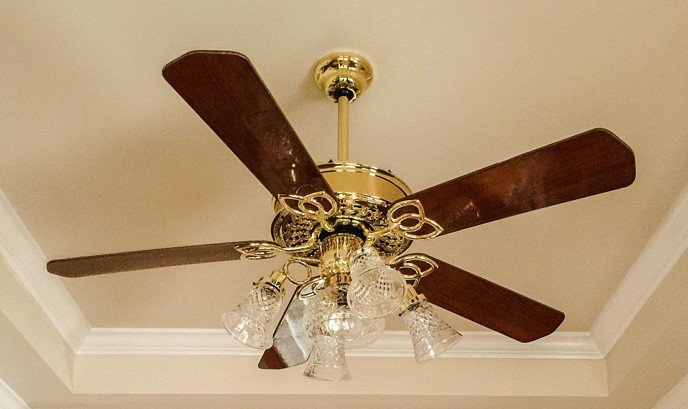
How energy efficient is your ceiling fan? You might own a great vintage ceiling fan, but is it costing you money every time you turn it on?
In the past, trying to figure out which ceiling fans were energy efficient and which ones were not efficient could be a difficult chore. Labeling changes and efficiency standards have changed that experience for brand-new ceiling fans, but what about those who own or inherit a ceiling fan that is 10+ years old?
Modern ceiling fans have their energy efficiency ratings determined by dividing the CFM with the wattage. You can do the same thing with your own vintage ceiling fan. Here is how.
#1. Determine the CFM of your ceiling fan.
Several features are taken into account when determining the CFM of a ceiling fan. The motor of the fan, the pitch of the blades, and even the shape or the length of the blades, all contribute to the cubic feet of air that can be produced by a ceiling fan.
Contracting Business has published the CFM formula you will need to create an accurate rating from your existing ceiling fan. The final figure you receive from these calculations will be your “airflow.”
#2. Determine your electricity use.
The amount of electricity your ceiling fan uses is a major part of your energy efficiency calculations. Electricity use is measured in watts. The manufacturer will usually publish electricity usage in the specs for your product. Check the owner’s manual if you still have it. If you inherited the ceiling fan or purchased it second-hand, you’ll need to calculate your electricity consumption.
The fan should have a stamp or label that says how many amps are used. It may be above the light socket or a blade. It may even be inside the fan base. Multiply the amps by 120.
#3. Determine your efficiency.
The efficiency of the fan is then measured by dividing the CFM by the total watts that are being used at full power. What you receive becomes a ratio measurement, not a percentage-based efficiency rating.
For example: If the CFM of a ceiling fan is 6200 and it uses 17.5 watts because no lights are used, then the efficiency rating will be about 350.
Your vintage ceiling fan is considered energy efficient if it has an efficiency rating, using this calculation, of 75 or greater.
What does this mean in practical terms?
- You can have a ceiling fan that moves a lot of air, but requires high wattage to do so, which means it will have a low energy efficiency rating.
- Ceiling fans without a light kit are almost always more energy efficient than ceiling fans with a light kit.
- Older ceiling fans are usually not as energy efficient as newer models, but that doesn’t mean they don’t meet efficiency standards.
- You may be able to adjust the efficiency rating of a vintage ceiling fan by upgrading it with a modern universal light kit that requires less wattage.
Vintage ceiling fans may not be as energy efficient as modern models in many circumstances, but there are always exceptions to the rule. Use these calculations and standards to determine if your current ceiling fan is meeting your energy needs today.